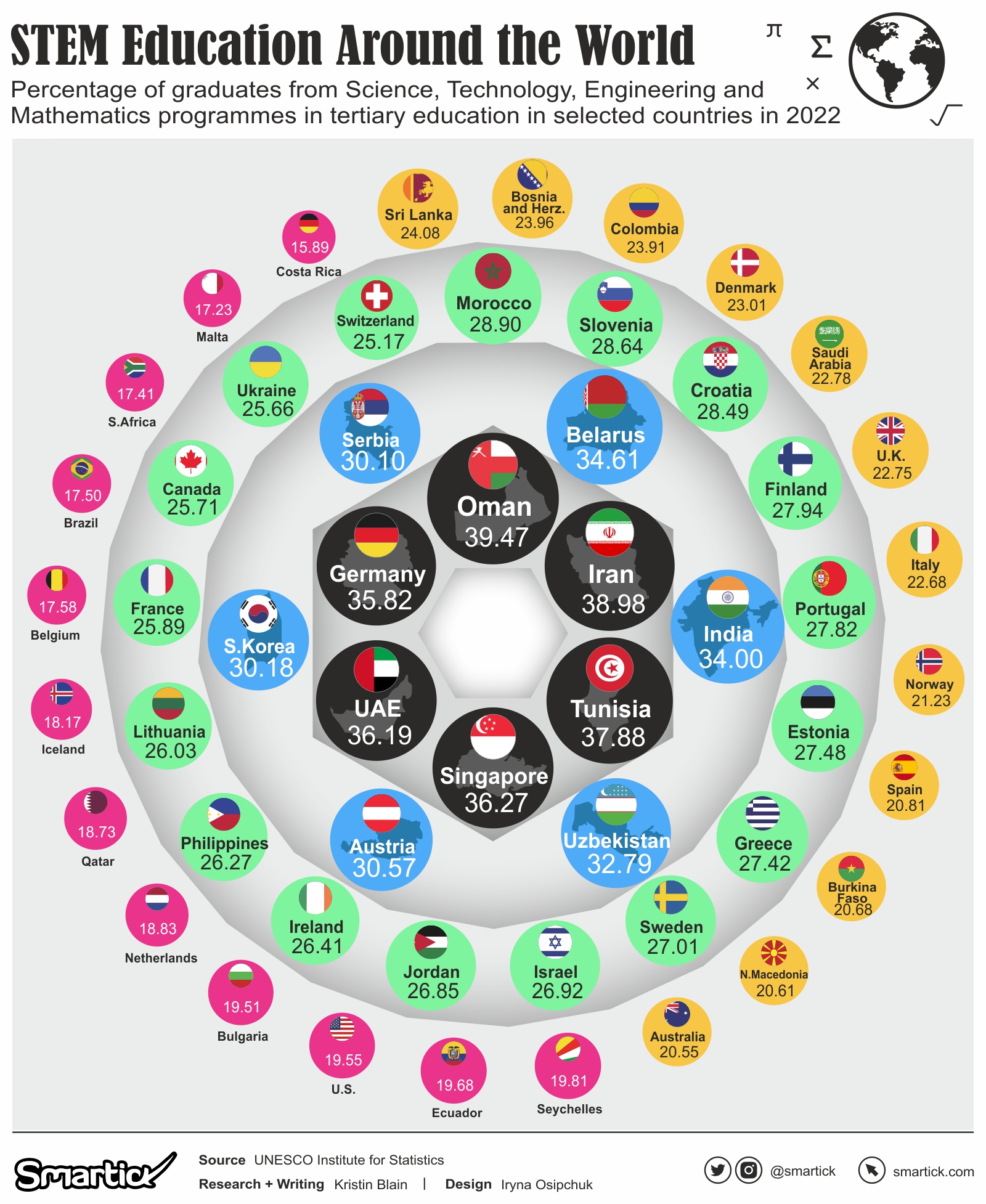
The demand for graduates specializing in science, technology, engineering, and mathematics (STEM) is high across the world, but the supply is often insufficient. This has prompted several countries to increase enrollment in STEM programs to support the growth of vital industries such as medical technology, digital services, mobility, and computer sciences. Despite these efforts, the success of such initiatives has varied among different nations.

Key Highlights
- To support growth in numerous industries, many countries have sought to increase the number of graduates in STEM fields.
- According to UNESCO statistics, Malaysia and Tunisia have a high proportion of students graduating in STEM fields.
- Other nations with a significant share of STEM graduates are the United Arab Emirates and South Korea.
- On the other hand, Western Europe and the US have lower numbers of STEM graduates.
STEM graduates are in high demand globally, but there aren’t enough to meet the demand. Many countries are working to increase enrollment in STEM fields to drive important growth industries like medtech, digital services, mobility, and computer sciences. However, the effectiveness of these efforts varies among different nations.
Recent data collected by the UNESCO Institute for Statistics shows that tertiary students in Malaysia and Tunisia have the highest likelihood of graduating with a STEM degree, with between 43.5% and almost 40% of students respectively receiving such degrees. Meanwhile, India has the most STEM graduates in total due to its massive population of around 1.4 billion people, with 34% of its students opting for STEM.
UNESCO has not released data for China, but in 2016 the World Economic Forum estimated that China was producing 4.7 million STEM graduates annually, which could potentially exceed India’s number. However, the National Science Foundation reports that China classifies engineering and science fields broadly, making it difficult to compare data. According to the U.S. government agency, there were only 1.6 million science and engineering graduates in China in 2014, which is lower than India’s number.
Several other countries are also producing a significant number of STEM graduates, including the United Arab Emirates, Germany, Belarus, and South Korea. Typically, nations that have a higher proportion of STEM graduates are located in the Arab world, Eastern Europe, and East Asia. After Tunisia, the share of STEM graduates is also greater than 29% in Algeria, Mauritania, and Morocco, which is largely due to the prevalence of computer engineering in the region. The Arab Gulf, which has recently focused on innovation in its economies, is producing an above-average number of STEM graduates in places like the UAE and Oman.

